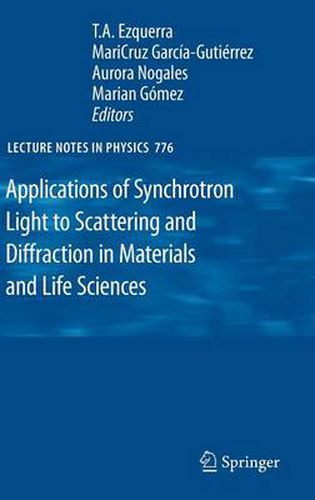Readings Newsletter
Become a Readings Member to make your shopping experience even easier.
Sign in or sign up for free!
You’re not far away from qualifying for FREE standard shipping within Australia
You’ve qualified for FREE standard shipping within Australia
The cart is loading…






This title is printed to order. This book may have been self-published. If so, we cannot guarantee the quality of the content. In the main most books will have gone through the editing process however some may not. We therefore suggest that you be aware of this before ordering this book. If in doubt check either the author or publisher’s details as we are unable to accept any returns unless they are faulty. Please contact us if you have any questions.
In a ?rst approximation, certainly rough, one can de?ne as non-crystalline materials those which are neither single-crystals nor poly-crystals. Within this category, we canincludedisorderedsolids,softcondensed matter,andlivesystemsamong others. Contrary to crystals, non-crystalline materials have in common that their intrinsic structures cannot be exclusively described by a discrete and periodical function but by a continuous function with short range of order. Structurally these systems have in common the relevance of length scales between those de?ned by the atomic and the macroscopic scale. In a simple ?uid, for example, mobile molecules may freely exchange their positions, so that their new positions are permutations of their old ones. By contrast, in a complex ?uid large groups of molecules may be interc- nected so that the permutation freedom within the group is lost, while the p- mutation between the groups is possible. In this case, the dominant characteristic length, which may de?ne the properties of the system, is not the molecular size but that of the groups. A central aspect of some non-crystalline materials is that they may self-organize. This is of particular importance for Soft-matter materials. Self-organization is characterized by the spontaneous creation of regular structures at different length scales which may exhibit a certain hierarchy that controls the properties of the system. X-ray scattering and diffraction have been for more than a hundred years an essential technique to characterize the structure of materials. Quite often scattering anddiffractionphenomenaexhibitedbynon-crystallinematerialshavebeenreferred to as non-crystalline diffraction.
$9.00 standard shipping within Australia
FREE standard shipping within Australia for orders over $100.00
Express & International shipping calculated at checkout
This title is printed to order. This book may have been self-published. If so, we cannot guarantee the quality of the content. In the main most books will have gone through the editing process however some may not. We therefore suggest that you be aware of this before ordering this book. If in doubt check either the author or publisher’s details as we are unable to accept any returns unless they are faulty. Please contact us if you have any questions.
In a ?rst approximation, certainly rough, one can de?ne as non-crystalline materials those which are neither single-crystals nor poly-crystals. Within this category, we canincludedisorderedsolids,softcondensed matter,andlivesystemsamong others. Contrary to crystals, non-crystalline materials have in common that their intrinsic structures cannot be exclusively described by a discrete and periodical function but by a continuous function with short range of order. Structurally these systems have in common the relevance of length scales between those de?ned by the atomic and the macroscopic scale. In a simple ?uid, for example, mobile molecules may freely exchange their positions, so that their new positions are permutations of their old ones. By contrast, in a complex ?uid large groups of molecules may be interc- nected so that the permutation freedom within the group is lost, while the p- mutation between the groups is possible. In this case, the dominant characteristic length, which may de?ne the properties of the system, is not the molecular size but that of the groups. A central aspect of some non-crystalline materials is that they may self-organize. This is of particular importance for Soft-matter materials. Self-organization is characterized by the spontaneous creation of regular structures at different length scales which may exhibit a certain hierarchy that controls the properties of the system. X-ray scattering and diffraction have been for more than a hundred years an essential technique to characterize the structure of materials. Quite often scattering anddiffractionphenomenaexhibitedbynon-crystallinematerialshavebeenreferred to as non-crystalline diffraction.